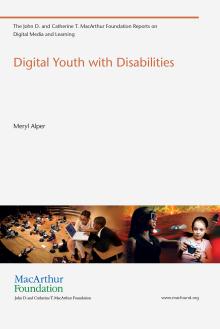“Introduce your hearing-impaired child to a world of new friends,” reads the above 1986 advertisement in Exceptional Parent magazine for the TeleCaption II, a closed-captioning decoder system produced by the National Captioning Institute that could be hooked up to a standard television set. By “a world of new friends,” the ad alludes to the cast of Sesame Street, symbolized here by bright yellow Big Bird, who boldly stands out from the black-and-white background. In a mock-up of the TeleCaption II system, the caption “IT’S HERE ON SESAME STREET” appears beneath Big Bird.
At the time, it was no simple task for Deaf and Hard-of-Hearing (DHH) children to find their way to Sesame Street, or to children’s TV in general.
In 1986, the TeleCaption II would have cost parents a suggested retail price of $200 (while Sears and JC Penney marked up the device to $250, expensive even by 2014 standards). Media scholar Greg Downey notes how few DHH households were buying caption decoders back then due to the exorbitant out-of-pocket price and a lack of captioned content being produced by TV networks. The dearth of content was in turn due to networks not volunteering to caption their material, which they claimed was too costly a process considering the relatively small potential consumer audience. All of this was also taking place prior to the 1990s, when Congress and the Federal Communications Commission eventually stepped in to regulate the captioning industry and the telecommunications marketplace, but only after significant activism by DHH individuals.
 In my new book, Digital Youth with Disabilities (MIT Press), written with support from the John D. and Catherine T. MacArthur Foundation’s Digital Media and Learning Initiative, I analyze some of the issues that today’s parents of youth with disabilities encounter in selecting digital media for their child and managing their child’s engagement with media. I highlight here the history of the antiquated TeleCaption II system, and its limited potential to provide access to captioned episodes of Sesame Street, not because DHH children and families are so much better off nearly 30 years later, but because it is difficult to say. Modern kids’ TV platforms such as YouTube introduce new issues surrounding accessibility and are mired with continued struggles over regulation. I argue in the book that deciding which media makes a best “fit” for a particular child with a disability not only involves their personal preferences and needs, but also the limits of existing platforms, content, and standards.
In my new book, Digital Youth with Disabilities (MIT Press), written with support from the John D. and Catherine T. MacArthur Foundation’s Digital Media and Learning Initiative, I analyze some of the issues that today’s parents of youth with disabilities encounter in selecting digital media for their child and managing their child’s engagement with media. I highlight here the history of the antiquated TeleCaption II system, and its limited potential to provide access to captioned episodes of Sesame Street, not because DHH children and families are so much better off nearly 30 years later, but because it is difficult to say. Modern kids’ TV platforms such as YouTube introduce new issues surrounding accessibility and are mired with continued struggles over regulation. I argue in the book that deciding which media makes a best “fit” for a particular child with a disability not only involves their personal preferences and needs, but also the limits of existing platforms, content, and standards.
More broadly, the book focuses on the ways in which school-age youth with disabilities and their families make media and technology part of their everyday lives, with particular attention to the heterogeneity of disabilities and additional dimensions of difference such as race, ethnicity, and class. I step outside of traditional research on disabled youth’s use of media and technology, which heavily focuses on school and therapeutic settings. Instead, I outline new parameters of research on “digital youth with disabilities”—those who also, as cultural anthropologist Mimi Ito and her colleagues put it, “hang out, mess around, and geek out” with media and technology—and call for further investigation as well as better translation of research into practice and policy. Digital Youth with Disabilities should be of interest to anyone working to make the children, media, and technology space more inclusive for young people and their families, as well as to those interested in the interplay between social change, cultural convergence, and new communication technologies.


